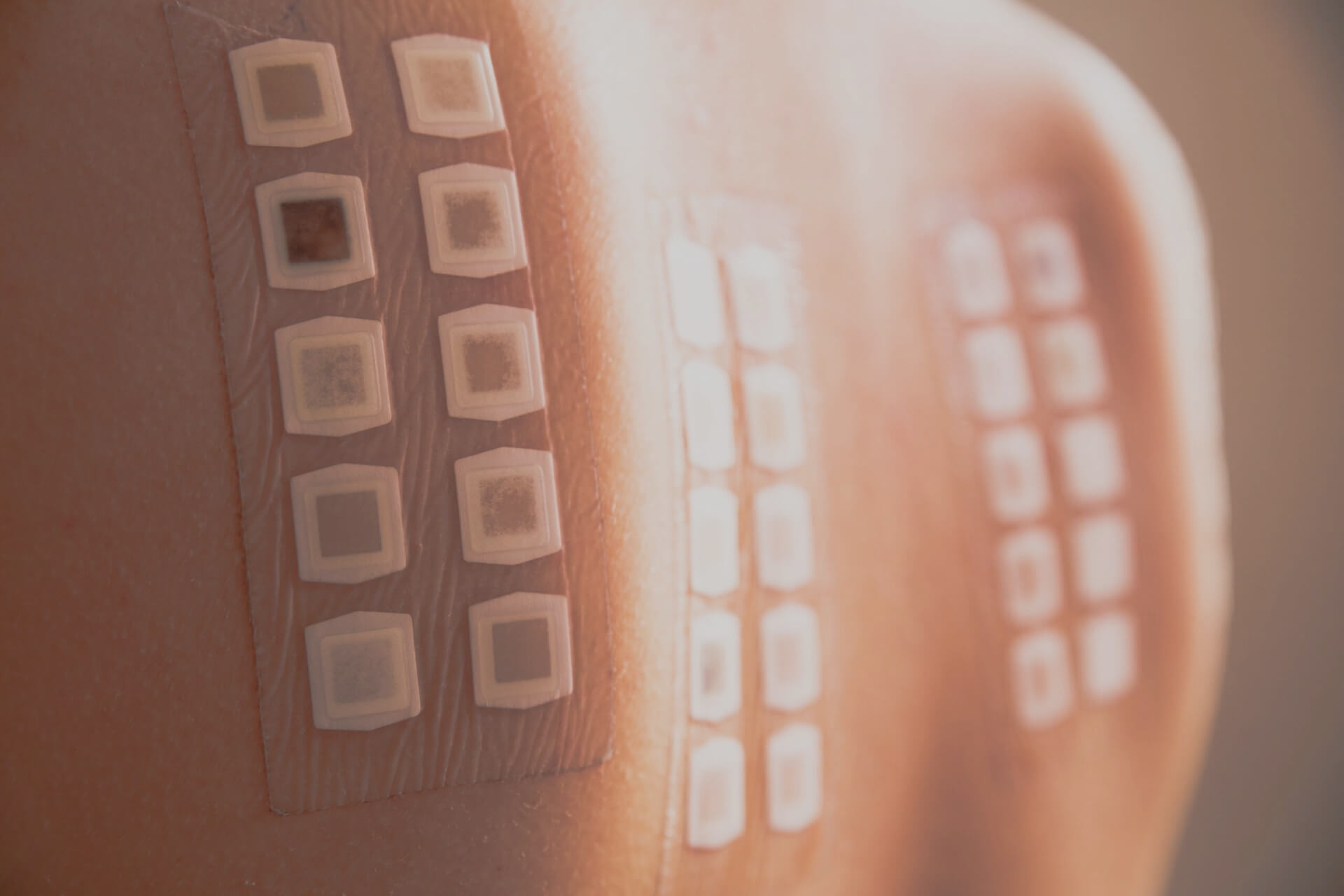Do you have initial allergic reactions and are not sure what causes them? At Dermarevolt, we can easily solve it. Epicutaneous tests are a specific form of skin testing to diagnose delayed allergic skin reactions - contact dermatitis. In our outpatient clinic, we use these tests to detect 24 allergens that are most commonly found in our population (a group of metals, cosmetics, perfumes, preservatives, plastics, rubbers, adhesives, resins, pharmaceuticals, plants, or various other substances from everyday life).
What is contact dermatitis?
It is an allergic reaction of the body to stimuli of the external and internal environment, manifested by inflammation of the skin. Manifestations vary in most cases. Initially, an inflamed area can be observed at the site of exposure to the allergen, on which itchy pimples, blisters are formed. Later, the blisters swell and scabs form. In many cases, itching is present.
How does the testing work?
Special test strips containing the individual allergens that most commonly cause contact dermatitis are glued to the back area. 3 visits to the dermatological outpatient clinic are required to perform the epicutaneous tests correctly:
- Day 1: examination by dermatologist and taping
- After 48 hours: unsticking and first test reading
- After 72 hours: second reading and evaluation of results
What do I need to avoid while I have epicutaneous tests stuck on?
- after the belts are glued on, you can carry out normal daily activities, but avoid excessive physical exertion that could cause you to sweat; avoid contact with water
- discontinue allergy suppressants (antihistamines) one week before testing
- the test site should not be exposed to UV treatment for at least 4 weeks
- testing in case of pregnancy is not advisable


